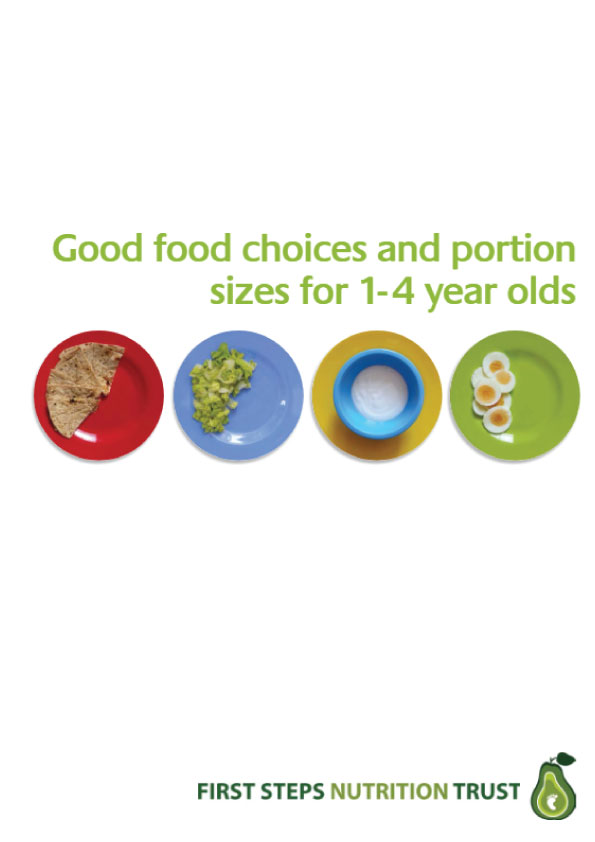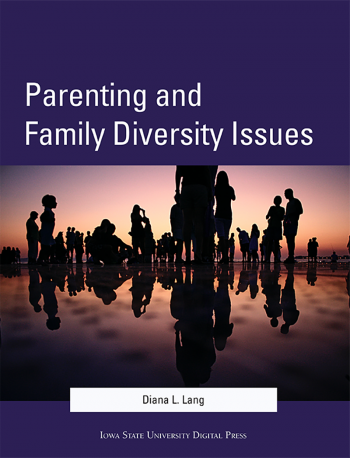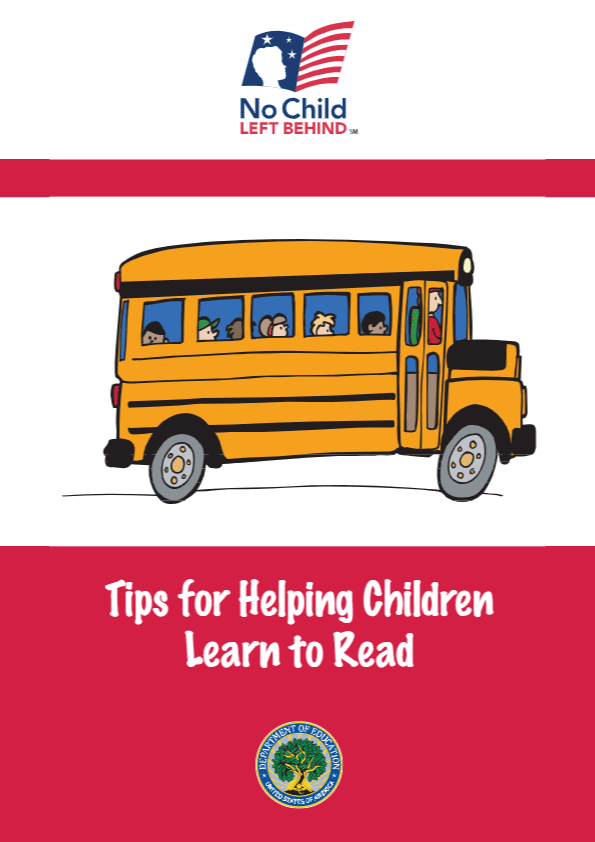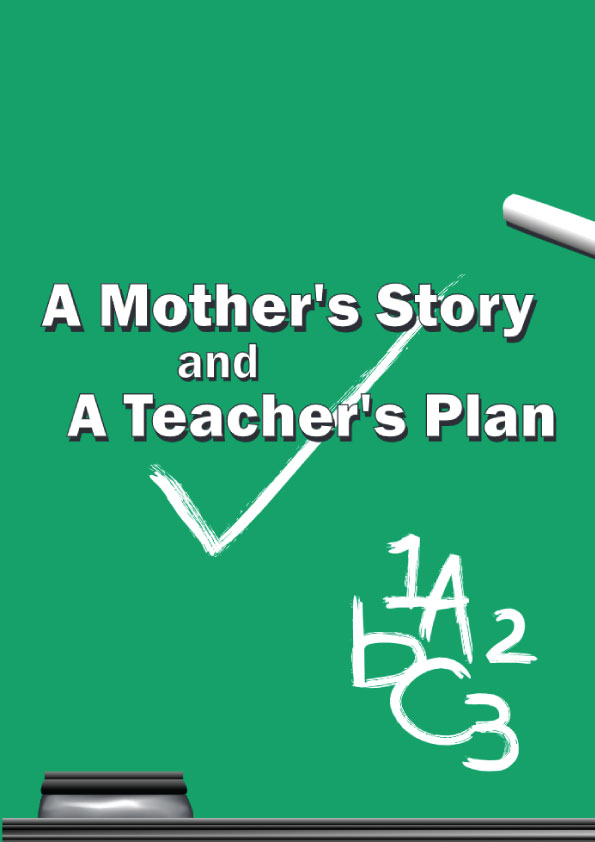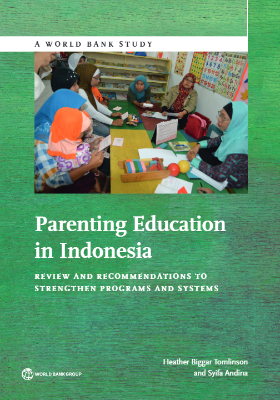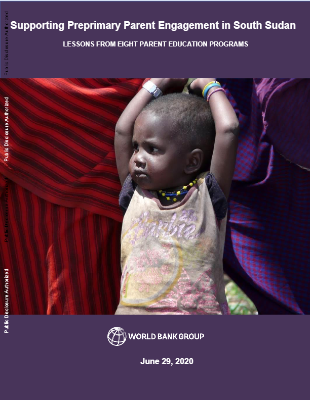What is in this guide?
This guide provides a visual resource to support all those who look after and support children aged 1-4 years to eat well. Eating well in the first five years of life is essential for growth and physical and mental development, as well as for a child’s future health. Encouraging good eating habits in the early years will contribute to a lifetime of good food choices.
This good food choices and portion size guide provides some simple ideas for the balance of different meal components that will meet the energy and nutrient needs of children in this age group. Some simple food-based recommendations for each food group are given, followed by photos showing appropriate portion sizes for 1-4 year olds.
Good meal choices, with appropriate portion sizes, for 1-4 year olds can be found in the following resources, produced by First Steps Nutrition Trust:
- Eating well recipe book
- Eating well: Packed lunches for 1-4 year olds
- Eating well: Vegan infants and under-5s.
- Eating well: Healthy snacks for 1-4 year olds
How have the portion sizes been calculated?
The portion sizes in this guide have been estimated from balanced menu plans that meet the average energy and nutrient needs of children aged 3-4 years. They are suitable for use in groups of children aged 1-4 years, but are based on the needs of those with the highest needs in the group. Some children will eat more, and some less than this. However, it is useful to have an idea of the sorts of portion sizes that can form the basis of meals for children of this age, bearing in mind that some children may want ‘seconds’ and that children should be allowed to eat healthy food to appetite.
How can this guide be used?
This guide can be used to support catering staff in early years settings where groups of children eat, to help them consider the amounts of foods they cook and serve.
The resource can also be used with families, to help them consider the sorts of foods and amounts of foods that are appropriate for their pre-school children, and the photos may also encourage a wider variety of foods to be offered.
We hope the resource will also help families who may not have English as a first language, to accustom themselves to the names and appearance of common foods served in UK settings.
Bread, other cereals and potatoes
How much to serve?
Foods from this group should be offered at every meal, and can be useful foods to offer as part of snacks.
These foods should make up about a third of the food served each day.
Good choices
- All types of bread – whole meal, granary, brown, wheatgerm, white, multigrain, soda bread, potato bread, chapattis, naan bread, rotis, rolls, bagels, pitta bread, wraps and tortilla
- Potatoes or sweet potatoes – boiled, mashed, baked or wedges Yam, plantain, cocoyam, cassava and other starchy root vegetables
- Pasta and noodles – whole meal and white
- Rice – brown and white rice Other grains such as pearl barley, couscous or bulgur wheat, maize (polenta), quinoa and cornmeal
- Breakfast cereals – low- sugar, low-salt cereals such as porridge, puffed wheat, weet bisks, crisped rice or flaked wheat.
Vegetables and fruit
How much to serve?
Offer different fruits and vegetables at meals and snacks.
1-4 year olds should be encouraged to taste at least five different fruits and vegetables a day.
Aim for 40g portions of vegetables and fruits for all 1-4 year olds at meals and snacks
Good choices
- All types of fresh, frozen and canned vegetables – for example, broccoli, Brussels sprouts, cabbage, carrots, cauliflower, courgette, green beans, kale, mushrooms, parsnips, peas, peppers, pumpkin, red cabbage, squash, spinach, swede or turnip
- All types of salad vegetables – for example, lettuce, watercress, celery, cucumber, tomato, raw carrot, raw pepper, radish or beetroot
- All types of fresh fruit – such as apples, bananas, pears, grapes, kiwi fruit, oranges, plums, berries, melon or mango
- All types of canned fruit in juice – for example, peaches, pears, pineapple, mandarin oranges, prunes, guava or lychees
- Stewed fruit such as stewed apple or pears, stewed dried fruit, stewed plums or stewed rhubarb
- Dried fruit such as raisins, dried apricots, dates, dried figs, prunes
Milk and dairy foods, and plant-based milk alternatives
How much to serve?
Foods from this group should be offered at 2-3 meals and snacks each day.
Good choices
- Breastmilk
- Milk
Whole (full-fat) cows’ milk (or other whole animal milk) can be used as the main milk drink from the age of 12 months. Over-2s can have semi-skimmed milk if they are good eaters. - Plant-based milk alternatives For children who avoid dairy products, or who are on plant-based diets, unsweetened calcium-fortified soya milk alternative can be given as the main milk drink from 1 year of age. Pea-based milk alternative has a similar nutritional profile to soya-based milk alternative but may not contain riboflavin. Other plant-based milk alternatives such as those made from nuts, coconut, oats or hemp may be higher in sugars, lower in energy and protein, or have few fortificants added. For more information on plant-based milk alternatives, see the next page.
- Cheese
Cheese is high in salt, so use in small amounts. - Yoghurt and fromage frais Choose plain, full-fat, unsweetened versions. Soya milk based or coconut milk based alternatives are available for those on dairy-free or plant-based diets
Meat, fish, eggs, pulses, nuts, seeds and meat alternatives
How much to serve?
Main meals should always contain an item from this group.
Foods in this group are high in iron and zinc and can also be usefully served as part of snacks, for example as sandwich fillings.
Good choices
- Meat – all types including beef, lamb, pork, chicken and turkey
- Fish includes:
• white fish such as cod, haddock, coley and white fish varieties from sustainable fish stocks such as pollack and blue whiting
• oil-rich fish such as herring and mackerel, salmon, trout, sardines, sprats or pilchards. Fresh or canned tuna does not count as an oil-rich fish but is a good source of nutrients. - Eggs – including boiled, scrambled or poached, or in an omelette
- Pulses – including all sorts of beans and peas such as butter beans, kidney beans, chickpeas, lentils or baked beans
- Ground nuts – such as smooth peanut butter, cashew or almond butter
- Crushed seeds or ground seeds – such as sunflower seeds, pumpkin seeds or tahini
- Meat alternatives – such as soya mince/ textured vegetable protein, Quorn or tofu
